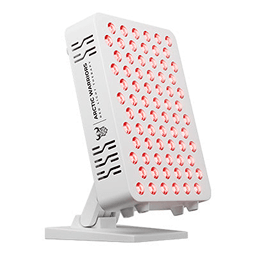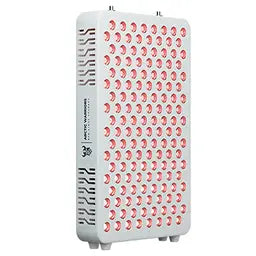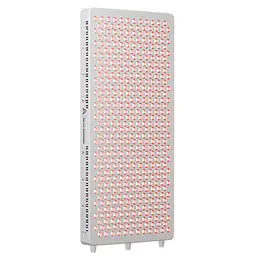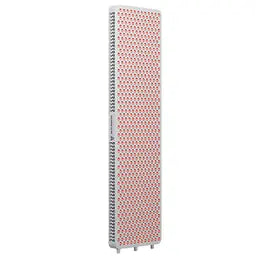Box Breathing Benefits to Improve your Health and Mood

Introduction
Box breathing, also known as square breathing, is a simple yet effective technique designed to reduce stress and improve mental well-being. This practice involves four equal parts: inhaling, holding the breath, exhaling, and holding again.
In today's fast-paced world, breathing techniques are gaining popularity as people seek natural methods to manage stress and enhance their mood. Practices like box breathing offer a quick and accessible way to achieve these health benefits.
This article will explore the benefits, techniques, and scientific evidence behind box breathing. Readers will gain a comprehensive understanding of how this practice can positively impact their lives.
However, incorporating additional wellness practices such as using water filters or chillers into your routine can further enhance your overall well-being. For instance, the use of high-quality water filters or chillers from brands like Arctic Warriors can significantly improve hydration and recovery processes. You can find more about their offerings through their html sitemap.
Understanding Box Breathing
Box breathing, also known as four-square breathing, is a straightforward yet powerful technique for managing stress and promoting mental clarity. The name "box breathing" comes from the four equal parts of the practice:
- Inhale
- Hold
- Exhale
- Hold
Each phase typically lasts for four counts, forming a "box" shape in your mind.
Step-by-Step Guide to Practice Box Breathing
- Find a Quiet Space: Sit comfortably with your back straight and feet flat on the ground.
- Inhale: Breathe in slowly through your nose for a count of four. Focus on filling your lungs.
- Hold: Hold your breath for another count of four.
- Exhale: Slowly exhale through your mouth for a count of four, emptying your lungs completely.
- Hold Again: Pause and hold your breath for a final count of four.
Repeat this cycle several times, maintaining a relaxed posture and focusing on your breath.
Tip: Place one hand on your chest and the other on your abdomen to feel the rise and fall of each breath, enhancing awareness.
Practicing box breathing regularly can help you develop better control over your breathing patterns, which can be beneficial during stressful situations or moments requiring high concentration.
This method is simple enough to be integrated into daily routines, providing a quick and effective way to reset and center yourself amidst the chaos of daily life.
The Science Behind Box Breathing's Benefits
Box breathing activates the body's relaxation response by engaging the parasympathetic nervous system. This system counteracts the "fight or flight" response induced by stress, bringing about a state of calm. When you practice box breathing, your heart rate slows, blood pressure decreases, and muscle tension eases. These physiological changes contribute to significant stress reduction and enhanced mental well-being.
Positive Impact on Emotions and Mental Health
- Anxiety Reduction: Box breathing helps regulate the autonomic nervous system, which can alleviate symptoms of anxiety. By focusing on controlled breath patterns, individuals can shift their attention away from anxious thoughts.
- Depression Relief: Consistent practice of box breathing has been linked to improved mood and emotional stability. The technique encourages mindfulness, which can help break negative thought cycles often associated with depression.
Studies have indicated that structured breathing exercises like box breathing can reduce cortisol levels (the stress hormone) and increase attention spans. This makes box breathing a practical tool for managing daily stressors and enhancing overall emotional resilience.
Enhancing Your Practice with Mindfulness Techniques
Combining box breathing with mindfulness can significantly deepen its effects. By focusing on the sensations during each breath, individuals can enhance their awareness and presence.
Tips for Combining Mindfulness with Box Breathing
- Focus on Sensations: Pay close attention to how the air feels as it enters and leaves your body. Notice the expansion of your diaphragm and the rise and fall of your chest.
- Engage All Senses: Incorporate a mindful scan of your surroundings. Feel the texture of your seat, listen to ambient sounds, and observe any scents in the air.
- Stay Present: If your mind starts to wander, gently bring it back to the rhythm of your breath.
Incorporating Box Breathing into Daily Routines
Incorporate box breathing into various parts of your day:
- Start Your Day: Begin with a few minutes of box breathing to set a calm tone for the day.
- During Stressful Moments: Use box breathing before presentations or meetings to reduce anxiety.
- Before Bedtime: Practice before sleep to help unwind and improve sleep quality.
Pairing Box Breathing with Other Exercises
Box breathing pairs well with:
- Meditation: Use it at the start of meditation sessions to center yourself.
- Yoga: Combine with yoga poses that promote relaxation, such as child’s pose or savasana.
- Diaphragmatic Breathing Exercises: Enhance lung capacity and relaxation by integrating diaphragmatic breathing techniques.
Exploring Scientific Evidence for Box Breathing's Effectiveness
Several studies highlight the benefits of box breathing on lung function and overall well-being.
- A 2021 study observed improvements in lung capacity among participants who regularly practiced box breathing. This suggests enhanced respiratory efficiency and potential benefits for those with respiratory conditions.
- Another research, focusing on stress hormones, found that box breathing significantly reduces cortisol levels, which is crucial for managing stress and improving mental health.
- The 2017 study on deep breathing techniques reported that such practices, including box breathing, increase attention spans and reduce symptoms of anxiety and depression. Participants experienced a notable decrease in their stress markers.
Box breathing's ability to activate the body's relaxation response is well-documented. Studies indicate that this technique can alter gene expression related to stress and energy metabolism, which may contribute to its calming effects. These findings underscore the efficacy of box breathing as a valuable tool for both physical and mental health improvement.
Practicing Box Breathing Safely: Risks and Considerations
Box breathing, when done incorrectly, can lead to potential risks like hyperventilation. Hyperventilation occurs when you breathe too quickly or deeply, causing an imbalance in carbon dioxide levels in your blood. This can result in symptoms such as:
- Dizziness
- Tingling sensations
- Lightheadedness
- Shortness of breath
To minimize these risks, follow these safety precautions:
- Find a Comfortable Position: Sit or lie down in a comfortable position where you feel supported.
- Start Slowly: Begin with shorter durations for each phase (inhale, hold, exhale, hold) and gradually increase as you become more comfortable.
- Breathe Naturally: Avoid forcing your breaths. Focus on smooth, controlled breathing without straining.
- Monitor Your Body: Pay attention to how your body feels during the practice. If you experience discomfort or any adverse effects, stop immediately.
By adhering to these guidelines, you ensure a safe and effective box breathing practice that enhances relaxation without unintended side effects.
Comparing Box Breathing with Other Popular Techniques
Wim Hof Method
The Wim Hof Method is a breathwork technique that emphasizes cold exposure therapy, breath-holding, and meditation-like practices. Developed by Wim Hof, it combines:
- Cold Exposure: Ice baths or cold showers, which can be facilitated by products such as the Arctic Warrior Ultimate All-in-1 Cold Plunge, to stimulate the body's adaptation mechanisms.
- Breathing Exercises: Deep inhalations through the nose or mouth followed by unforced exhalations. Typically involves 30-40 bursts of breaths, breath-holding until the urge to breathe again, and a deep inhalation for 15 seconds.
- Meditative Practices: Focus on mental resilience and stress reduction.
For a more comprehensive understanding of this method, you can refer to this detailed guide.
Key Differences
Mechanisms:- Box Breathing: Involves a consistent cycle of inhaling, holding the breath, exhaling, and holding again. This method focuses on balance and rhythm.
- Wim Hof Method: Combines intense breathing with prolonged breath-holding and cold exposure to trigger physiological responses like increased blood oxygen levels and potential anti-inflammatory effects.
- Box Breathing: Known for reducing stress hormones, improving attention levels, and enhancing emotional well-being.
- Wim Hof Method: Reported benefits include improved mood, enhanced immunity, potential fat loss due to brown fat accumulation, and reduced inflammation.
- Box Breathing: Can be practiced anywhere and integrated into daily routines effortlessly.
- Wim Hof Method: Requires specific conditions like access to cold water for full practice sessions. This could involve using specialized equipment such as a waterproof mat for ice baths, making the process more convenient.
Both techniques offer unique benefits tailored to different needs. Box breathing is ideal for those seeking a simple yet effective tool for stress management. In contrast, the Wim Hof Method suits individuals looking for an intensive practice that combines physical and mental elements.
Conclusion: Breath as a Tool for Well-Being
Regular practice of box breathing or other breathing techniques can significantly enhance your overall well-being. By committing to a consistent routine, you may notice improvements in stress levels, emotional balance, and mental clarity.
- Find what works best: Experiment with different techniques to discover which aligns with your unique needs and lifestyle.
- Commit to the practice: Set aside dedicated time each day to practice, whether it's box breathing, pranayama, or another method that resonates with you.
Embrace the power of breath as a tool for personal growth and stress management. Through dedication and mindful practice, you can cultivate a more balanced and peaceful state of being.
FAQs (Frequently Asked Questions)
What is box breathing and how does it work?
Box breathing, also known as four-square breathing, is a technique that involves four equal parts: inhaling, holding the breath, exhaling, and holding again. This structured approach helps to activate the body's relaxation response, reducing stress and promoting mental well-being.
What are the health benefits of practicing box breathing?
Practicing box breathing can lead to significant health benefits including stress reduction, improved mood, and relief from anxiety and depression. It enhances emotional regulation and overall mental health by calming the nervous system.
How can I effectively practice box breathing?
To practice box breathing effectively, follow these steps: inhale deeply through your nose for a count of four, hold your breath for another count of four, exhale slowly through your mouth for a count of four, and hold your breath again for a count of four. Repeat this cycle several times.
Are there any risks associated with box breathing?
Yes, improper practice of box breathing can lead to risks such as hyperventilation. It is important to practice within your comfort zone and listen to your body. If you feel lightheaded or uncomfortable, stop immediately and return to normal breathing.
How does box breathing compare to other techniques like the Wim Hof Method?
The Wim Hof Method combines cold exposure with breath-holding techniques, focusing on building resilience through extreme conditions. In contrast, box breathing emphasizes controlled inhalation and exhalation to promote relaxation. While both methods have unique benefits, their mechanisms differ significantly.
How can I incorporate mindfulness into my box breathing practice?
To enhance your box breathing practice with mindfulness, focus on the sensations of each breath—notice how it feels as you inhale and exhale. You can also integrate box breathing into daily routines or use it alongside meditation to deepen its effects.



















